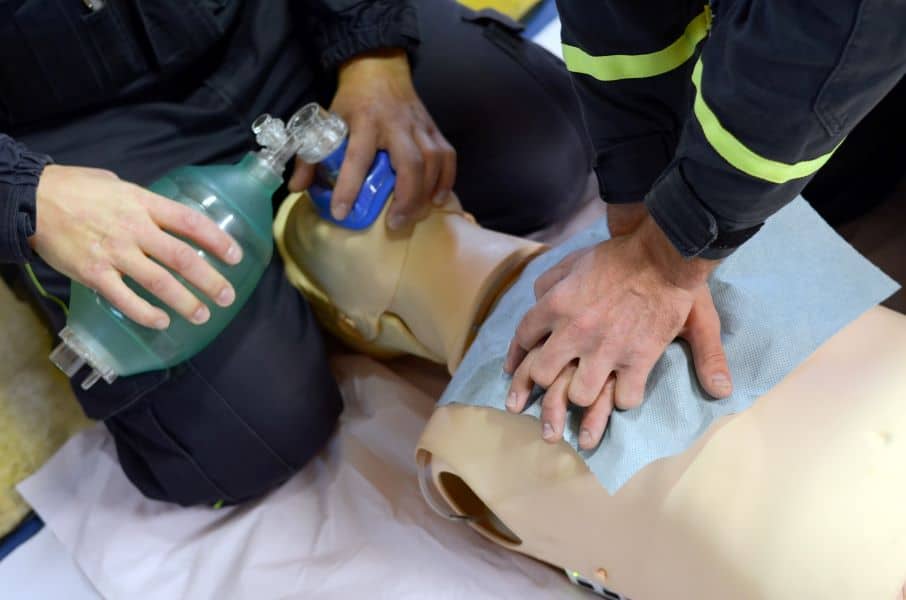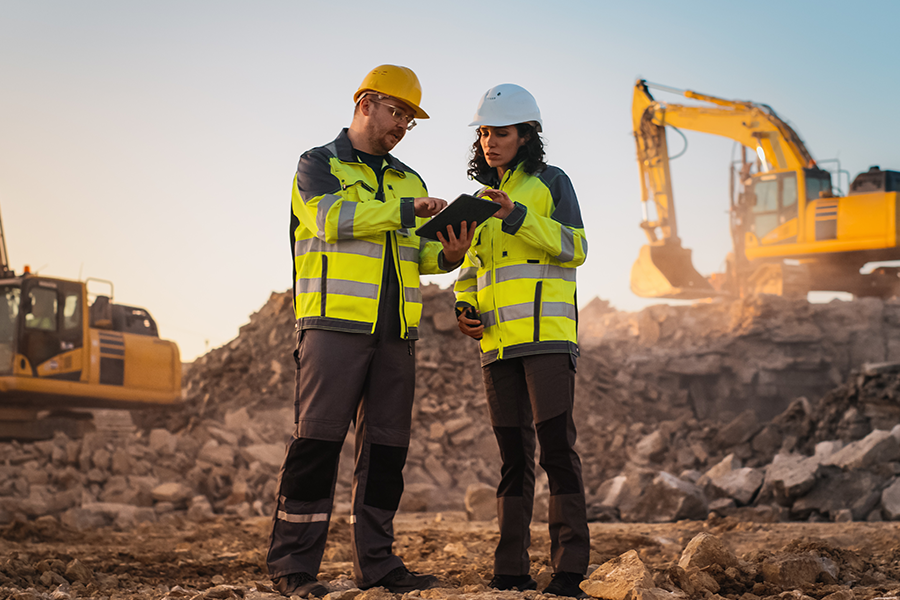Rescue teams responding to road crashes face a myriad of challenges that test their skills and resilience. Each accident scene presents a unique set of circumstances that can complicate search and rescue efforts, ranging from the condition of the victims to environmental factors.
These teams are required to execute their duties with precision and care, despite the unpredictable nature of their work environment.
One of the primary obstacles faced by road crash rescue teams is the critical time frame within which they must operate. Known as the ‘golden hour,’ the first sixty minutes after an accident are crucial for providing medical care to reduce fatalities. However, issues such as traffic congestion, remote locations, and inclement weather can severely impede their ability to reach victims promptly.
Additionally, ensuring the safety of the rescue personnel themselves is a significant concern. They encounter risks from unstable vehicles, combustible materials, and the potential for secondary accidents, all of which require comprehensive training and adherence to strict safety protocols.
This commitment to safety is paramount in protecting not just the victims but also the rescuers who are dedicated to saving lives under often perilous conditions.
Understanding The Incident Scene
Accurate comprehension of the incident scene is critical for road crash rescue teams as it dictates the subsequent actions and ensures the safety of both the victims and the emergency responders.
Assessment Of The Situation
When road crash rescue teams arrive at the scene, their first task is to swiftly and thoroughly assess the situation. The team must ascertain the number of vehicles involved, their positions, and the condition of the occupants.
Identifying if there are any immediate threats such as fires, exposed electrical wires, or a risk of explosion is vital. They also need to determine the nature and severity of injuries to prioritise medical attention.
Information on hazardous materials present must be collected – for instance, placards on a lorry can indicate the transportation of dangerous goods. The stability of the vehicles and surrounding structures such as bridges or power poles must be assessed to prevent further incidents.
This information helps in strategising the rescue operation and ensuring all actions are tailored to the specific challenges at hand.
Risks And Safety Measures
Upon approaching the incident scene, rescuers must be cognisant of potential risks. They must bear in mind the flow of traffic near the accident scene, potential hazards from damaged vehicles, such as leaking fuel or broken glass, and the risk of vehicle movement during the rescue.
To mitigate these risks, the rescue team may set up a controlled perimeter, which could involve traffic cones and warning signs to redirect unaffected traffic. The use of stabilisation equipment is essential to prevent any movement of the vehicles that could endanger the victims or rescuers.
Furthermore, continuous monitoring for the presence of flammable substances or structural instability is necessary. Emergency response teams often wear personal protective equipment (PPE) which may include helmets, high-visibility clothing, and specialised gloves to shield against various hazards.
Medical Emergencies Handling
In the critical moments following a road crash, rescue teams face the immense responsibility of providing essential medical care and coordinating effectively with healthcare professionals to increase the survivors’ odds of recovery.
Initial Medical Assistance
Road crash rescue teams are trained to perform life-saving interventions at the scene of the accident. These first responders must rapidly assess the victims for life-threatening injuries, such as severe bleeding, airway obstructions, or shock.
They utilise a range of emergency medical techniques, from applying tourniquets to performing CPR (Cardiopulmonary Resuscitation) and using automated external defibrillators (AEDs) when necessary. The immediacy and quality of these interventions can significantly impact patient outcomes.
Coordination With Medical Teams
Once initial medical assistance is underway, rescue teams must seamlessly coordinate with inbound emergency medical services (EMS). This involves succinctly communicating the victims’ conditions, any care already rendered, and potential complications during transport.
A structured handover, often using the ISBAR (Identification, Situation, Background, Assessment, and Recommendation) framework, ensures the incoming medical team is fully informed. Such coordination is crucial to facilitate a smooth transition and continued care en route to medical facilities.
Technical Challenges In Extrication
Extrication during road crash rescue operations presents technical challenges that rescue teams must overcome. Advanced skills, techniques, and the proper use of specialised equipment are critical for success.
Using Rescue Tools
Rescue teams face significant challenges when utilising various tools to extricate victims. Hydraulic cutters, spreaders, and rams must be carefully chosen based on the specific materials and construction of the vehicle.
The use of high-strength steel in modern vehicles requires tools capable of exerting greater force, and operators must be adept at using these tools in confined spaces. Tool malfunction or inadequate power supply can further complicate the extrication process.
Vehicle Stabilization Techniques
Stabilising a vehicle is paramount for safe extrication. The sophistication of modern vehicles, with varying centres of gravity and stabilisation points, requires technical knowledge to successfully employ stabilisation techniques.
Rescue teams use chocks, blocks, and stabilisation struts; however, uneven terrain or vehicle position, such as being upside down or on its side, often necessitates improvisation and adaptability. A thorough understanding of vehicle dynamics and stability is essential to prevent additional movement that could endanger both the victim and the rescue personnel.
Inter-Agency Cooperation
Effective inter-agency cooperation is vital for the success of road crash rescue operations. It ensures a unified and efficient response from all parties involved.
Communication With Other Responders
In a road rescue scenario, clear and timely communication between different agencies such as police, fire, and ambulance services is crucial. These entities must share information about the nature of the accident, the resources needed, and any hazards present at the scene.
Radio systems are often employed to facilitate immediate exchange of information, and procedures are in place to resolve any frequency or communication protocol conflicts.
Collaboration Protocols
Collaboration protocols define how multiple agencies work together during a road crash rescue. These protocols include defined roles and responsibilities, shared safety procedures, and the use of joint training sessions to improve interoperative function.
Agencies typically reference a pre-arranged framework which outlines command structures and the integration of services, ensuring that the actions of diverse teams are coordinated and not duplicative.
Post-Rescue Operations
Post-rescue operations are critical components of road crash responses, emphasising the importance of dealing with the aftermath and providing support for victims and their families.
Dealing With Aftermath
Following the rescue phase, teams are tasked with clearing the crash site to restore normal traffic flow and reduce secondary incidents. Their responsibilities often include the removal of debris and possibly hazardous materials.
Moreover, they must ensure that the area is safe for other road users, a process that might involve coordinating with towing services, emergency services and road maintenance crews.
Support For Victims And Families
The psychological impact on victims and their families is profound. Victim support specialists work to ensure that immediate and long-term needs are met.
They provide essential information and referrals to counselling services, help navigate insurance processes, and offer guidance on legal matters. The consistent focus is on delivering compassionate and practical assistance during a difficult time.
Training And Preparedness
Road crash rescue teams face unique challenges requiring specific training and a high level of preparedness. The ability to respond effectively hinges on realistic training exercises and up-to-date knowledge.
Simulated Rescue Scenarios
Simulated scenarios are a cornerstone of training for rescue teams. They replicate the conditions and pressures of real-life road crash situations to ensure that responders can manage various emergencies.
Practical exercises involve staged accidents where team members practise extrication techniques and medical interventions in a controlled environment. This hands-on approach fosters critical decision-making skills that are vital in unpredictable conditions.
Continuous Skill Development
Continuous training is essential for maintaining the proficiency and readiness of road crash rescue teams.
Skill updates are imperative, covering advances in vehicle technology, new extrication equipment, and evolving medical care standards.
Teams regularly attend workshops and accreditation programmes to refine their abilities, ensuring their methods remain best practice. This ongoing development is imperative to adapt to emerging challenges in road rescue scenarios.
Challenges Faced By Road Crash Rescue Teams
Road crash rescue teams encounter a range of difficulties that can impact their efficiency and safety.
These challenges start with time constraints. Teams often operate within the ‘golden hour,’ in which prompt medical intervention is crucial for victim survival.
Access to crash sites sometimes requires navigating through dense traffic or rough terrain, which can lead to delays.
The location and environment of the incident pose additional hurdles.
Crashes in remote areas may have limited accessibility, whereas urban ones might evolve under the gaze of large numbers of onlookers. This can potentially cause distractions or obstruct operations.
Safety hazards, such as the risk of fire, unstable vehicles, and the presence of hazardous materials, necessitate stringent risk assessment and management.
Rescue workers must often extract victims from compromised vehicles, which demands specialised tools and techniques.
This intricate task, coupled with the necessity to maintain the integrity of the crash site for investigative purposes, adds complexity to their mission.
The rescue team also faces emotional and psychological stress from working in high-stakes environments and dealing with traumatic situations.
Managing this stress is crucial to prevent burnout and ensure long-term operational capacity.
Communication between multiple agencies, including paramedics, police, and fire services, requires clear and efficient protocols.
Disjointed communication can lead to coordinated response issues, compromising both rescue efforts and safety.
Equipping teams with the skills and resources to overcome these challenges is essential for their success.



